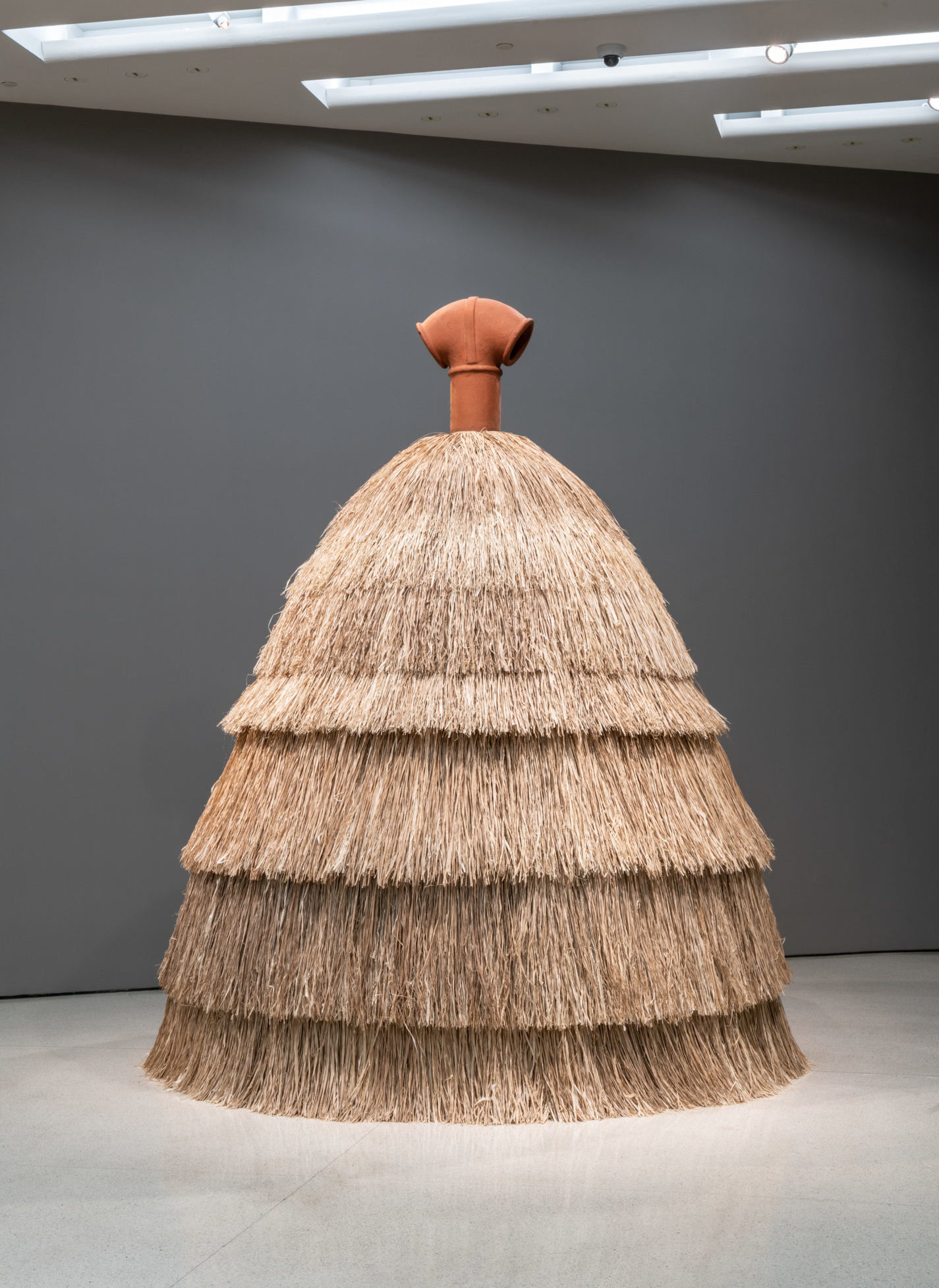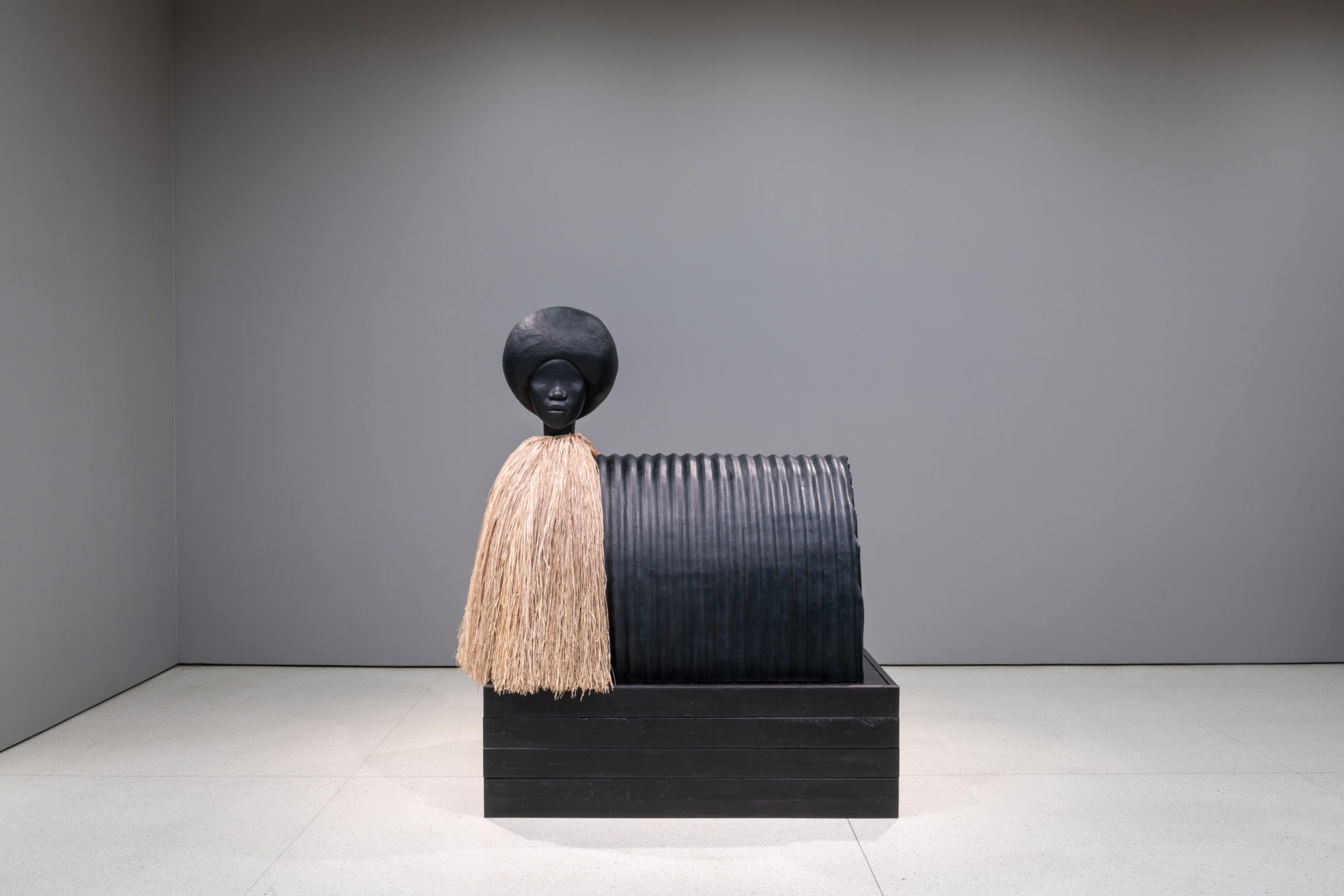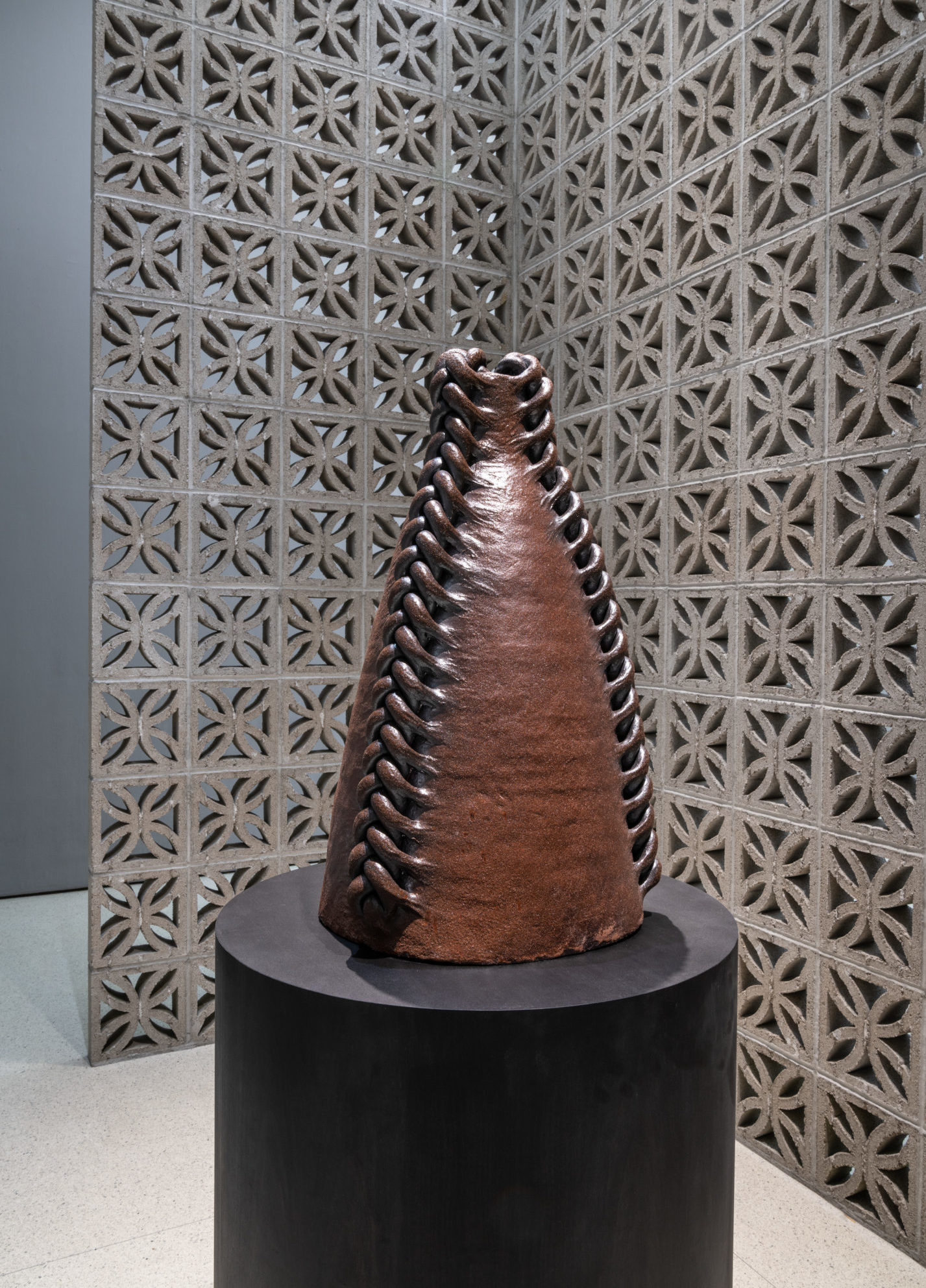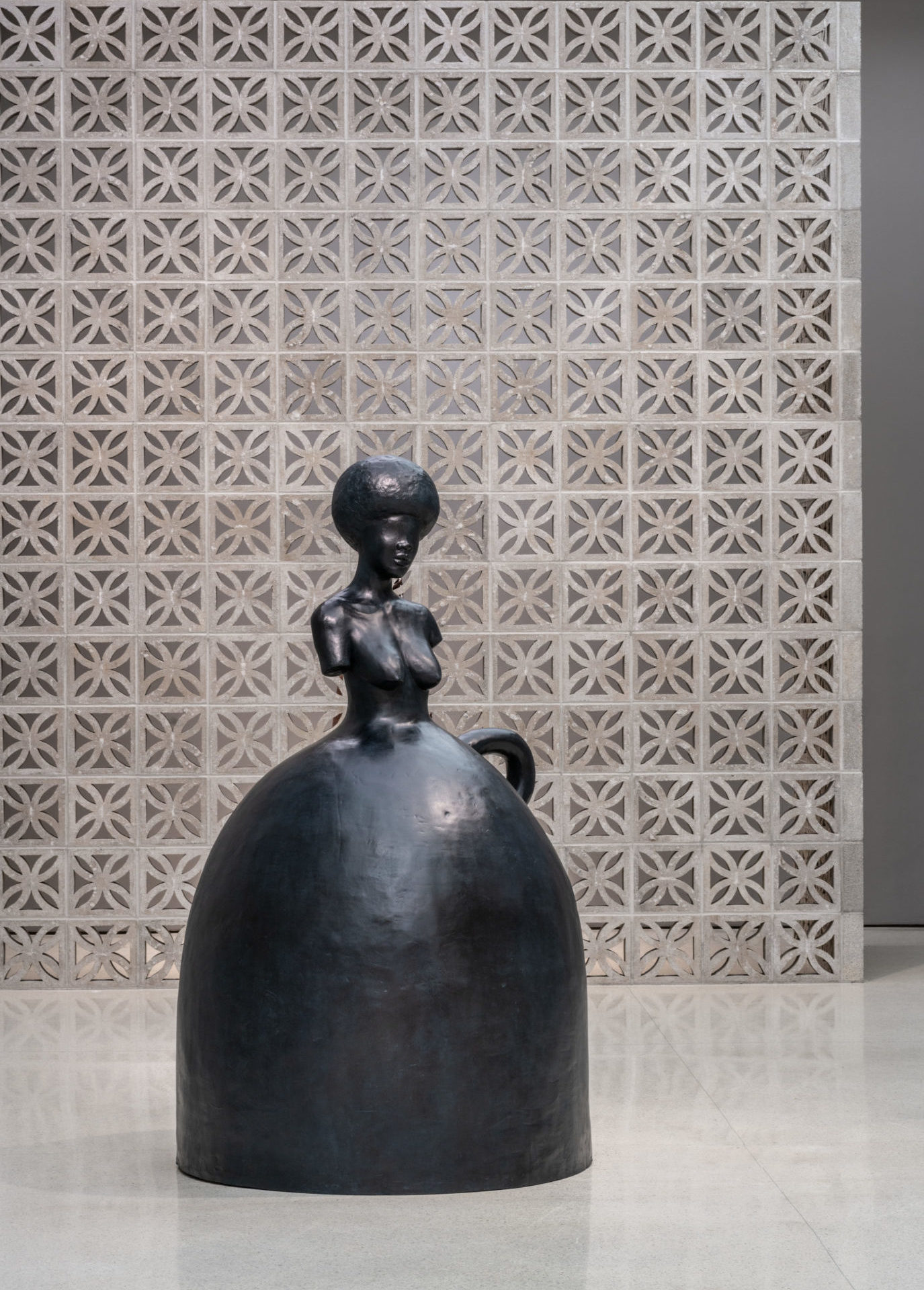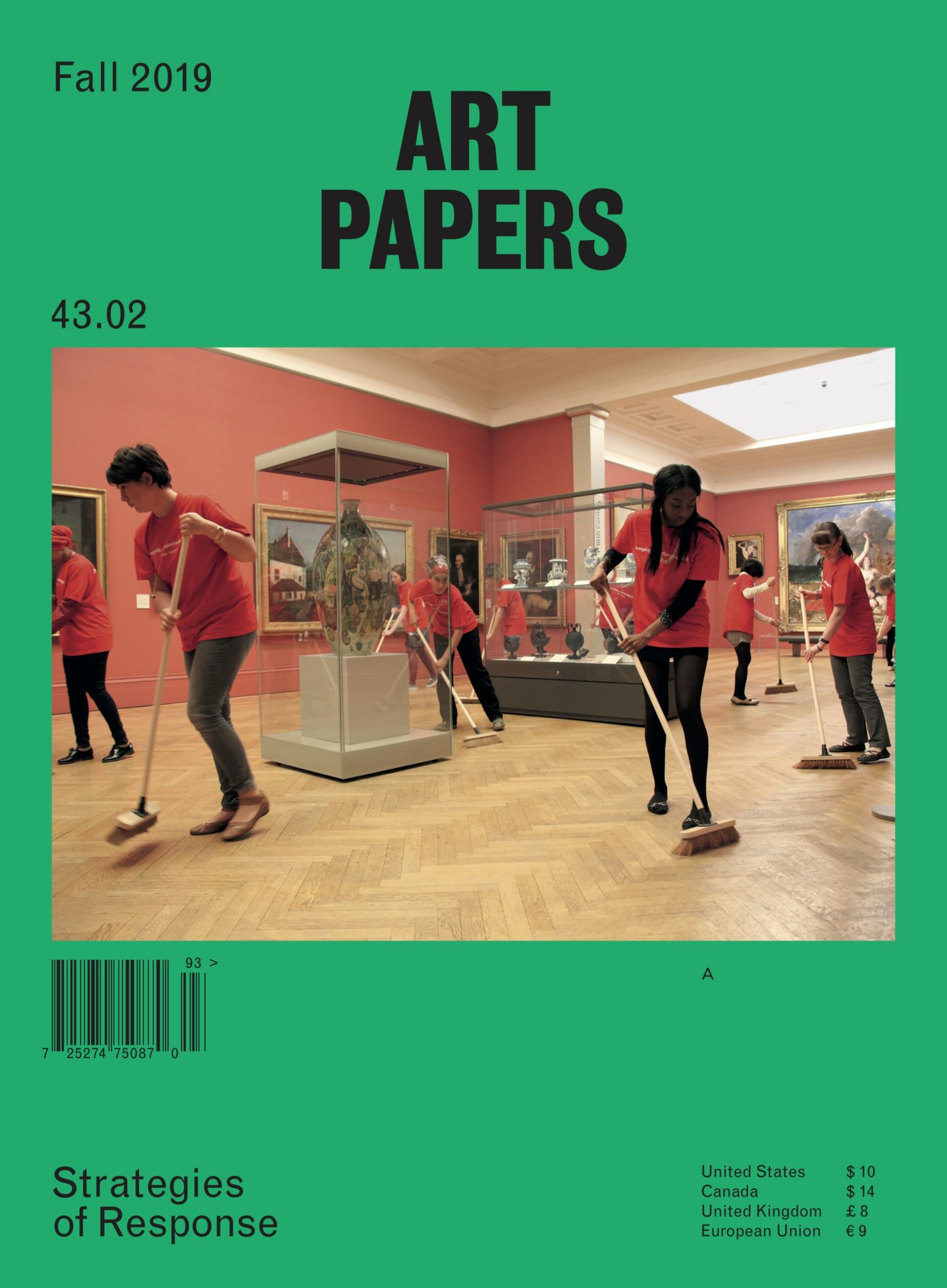Simone Leigh: Loophole of Retreat
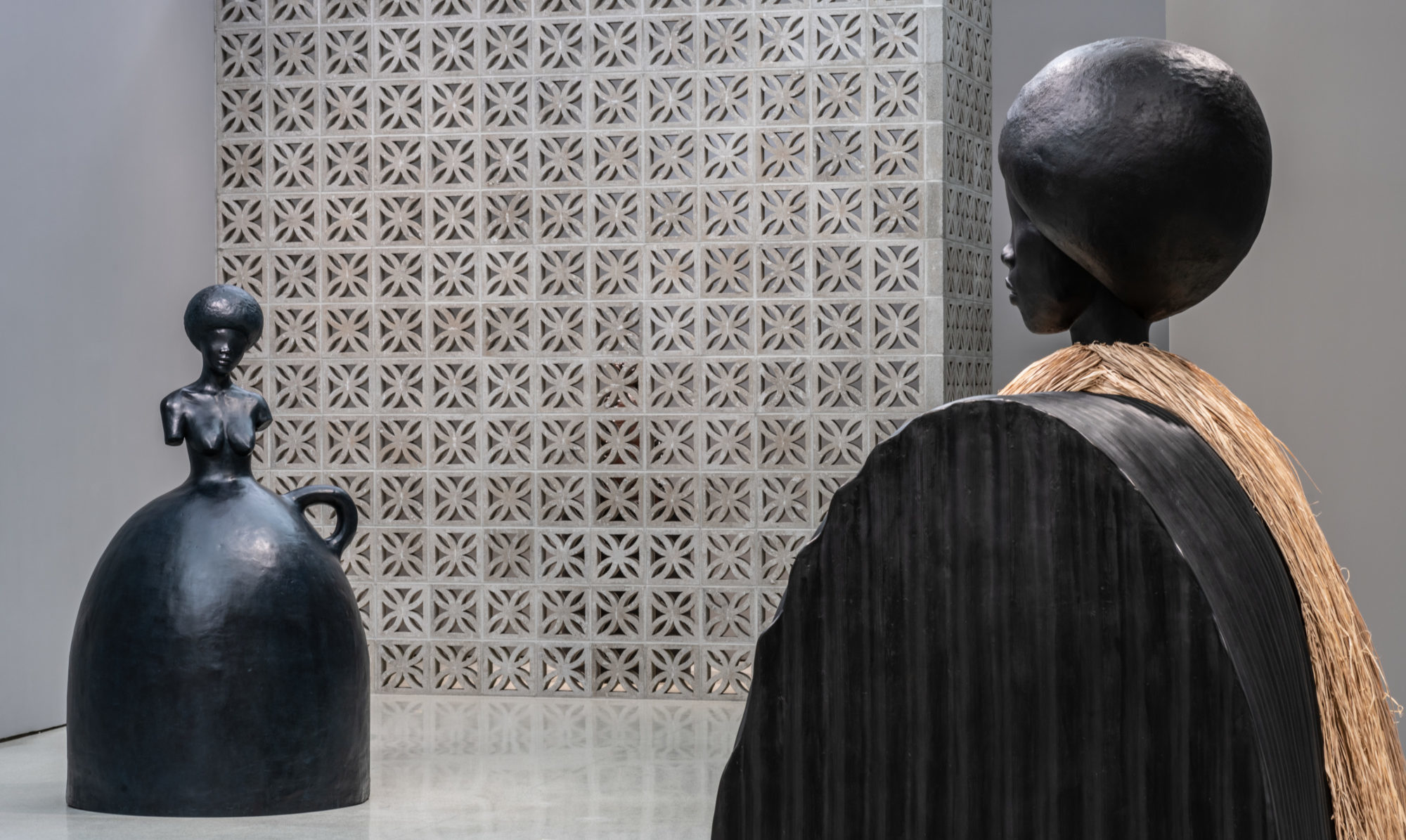
Simone Leigh, Loophole of Retreat, installation view, 2019 [photo: David Heald © 2019 The Solomon R. Guggenheim Foundation; courtesy of the artist and Guggenheim Museum, New York]
Share:
Simone Leigh’s Hugo Boss Prize exhibition, Loophole of Retreat, continues the ongoing exploration of black female subjectivity characteristic of Leigh’s practice. Leigh’s sculptures are solid, strikingly monumental, and though lacking eyes, they refuse to go unseen. The exhibition places black womanhood—with all its nuanced complexity—at the fore by referencing historical and contemporary narratives to define black femininity in a way that focuses on the resilient acts of black women throughout history. The exhibition’s title, drawn from a chapter of Harriet Jacobs’ autobiography, Incidents in the Life of a Slave Girl, describes a seven-year period when Jacobs hid from her slaveholder in a tiny garret above her grandmother’s home. Although confined to a dark “crawlspace” no more than three feet high, Jacobs maintained that she would have chosen this reality over her lot as a slave. Jacobs’ defiant autonomy in the face of unfathomable injustice forged a loophole of retreat, a metaphorical refuge, from the reality of an enslaved existence in the Antebellum South. With Jacobs’ narrative as a touchstone, Leigh’s new sculptures and sound installation at the Guggenheim explore an ontology of black women, centering radical agency and self-determination while daring to present a femininity defined by strength, solidity, and power.
Upon entering the level 5 gallery space, viewers are met with three monumental female forms. The largest, Panoptica, stands nearly 11 feet tall and is made of a single terra cotta pipe placed at the apex of an expansive raffia skirt. The use of raffia, a material found in tropical regions of Africa, recalls architectural forms endemic to the region. The billowing raffia skirt echoes thatched roofs of dwellings in Togo and elsewhere. Leigh uses the language of architecture to embed layers of meaning into the form of her sculptures. Atop the raffia skirt, the terra cotta chimney pipe towers over the space, surveying the gallery from above as its title suggests.
Simone Leigh, Panoptica, 2019, terracotta pipe and chimney, steel, raffia, 125 x 120 inches [photo: David Heald © 2019 The Solomon R. Guggenheim Foundation; courtesy of the artist and Guggenheim Museum, New York]
The female form is further abstracted in Sentinel, a bronze sphinx-like sculpture with a woman’s head wearing an afro mounted beside a large cylinder that is textured like corrugated pipe. Blending the female form with a utilitarian object suggests both labor and power in femininity. This blending occurs again in the sculpture Jug, which depicts a black woman emerging from a handled vessel. Although the form most clearly recalls that of a vessel, Leigh draws from a wide range of references—the voluminous gowns in Velázquez’s Las Meninas, the dome-shaped dwellings of the Mousgoum people in Cameroon and Chad—and perhaps most compellingly, Mammy’s Cupboard, a soul food restaurant in Mississippi. The restaurant, whose form is that of a 28-foot-tall woman wearing a hoop skirt, was originally intended to depict the racist archetype of a black domestic worker. Unlike the architecture of Mammy’s cupboard, Jug appears solid, and refuses the viewer any indication of its interior. Continuing this refusal, the bronze, like the other figures in the space, does not reciprocate the viewer’s gaze. Sculpted without eyes, Leigh’s sculptures assert an autonomy that resists the presuppositions and implications of onlookers.
Themes of defiant autonomy reverberate throughout the exhibition and lead to a site-specific sound installation partitioned at the rear of the gallery. Sharing its title with the exhibition, Loophole of Retreat is a walled structure made from the type of ornamental breezeway blocks often used in architecture of the South. Within the installation’s trellised walls sits The Village Series #14, a bell-shaped stoneware vessel adorned with woven forms braided to the tension of cornrows. Enclosed by concrete walls, the enclave simultaneously recalls a prison cell and a sacred space.
Simone Leigh, Sentinel, 2019, bronze, raffia, 78 x 65.5 x 40.5 inches [photo: David Heald © 2019 The Solomon R. Guggenheim Foundation; courtesy of the artist and Guggenheim Museum, New York]
Emanating from within it is a conglomeration of sounds. The audio, created in collaboration with Philadelphia-based musician and poet Moor Mother, layers together musical samples, a recording of a recent Brooklyn prison protest, and news coverage of a fatal 1985 police bombing of the Philadelphia-based, black revolutionary organization, MOVE. This work of what Leigh calls “sonic protection” was created to honor and venerate Debbie Africa, an activist who was incarcerated while eight months pregnant. After giving birth, fellow inmates sang songs and made noises to distract the guards from realizing that Africa’s baby had been born. Their efforts ultimately granted Africa a few more days with her newborn baby before guards took him away. The layered audio places viewers in that exact moment of resistance, suggesting what it might have sounded like in Africa’s cell amid the inmates’ ruckus. Through use of sound, Leigh’s installation re-creates a moment of women collectively asserting their agency for protection. Much in the way the sculptures in the exhibition do, femininity is here defined not by fragility and passivity but by solidity and strength.
Simone Leigh, Loophole of Retreat (detail), 2019, concrete blocks, sound, 6:44 minutes, dimensions variable [photo: David Heald © 2019 The Solomon R. Guggenheim Foundation; courtesy of the artist and Guggenheim Museum, New York]
Simone Leigh, Jug, 2019, bronze, 84.5 x 49.6 x 48.7 inches [photo: David Heald © 2019 The Solomon R. Guggenheim Foundation; courtesy of the artist and Guggenheim Museum, New York]
Guided by the story of Harriet Jacobs, Loophole of Retreat explores the radical agency of black women. Never shying away from addressing her target audience, Leigh places black women at the center to explore narratives centered not in trauma but in the defiantly autonomous acts that often follow it. The exhibition also includes a printed broadsheet written by cultural historian Saidiya Hartman and designed by artist Nontsikelelo Mutiti, as well as a film program featuring the work of artist and director Madeleine Hunt-Ehrlich. In tandem with the exhibition, a conference dedicated to the intellectual life of black women brings together writers, artists, filmmakers, and activists. The artworks on view redefine femininity in a way that centers the experiences of black women, and the exhibition, as a whole, testifies to the value and power of a collective female force. Beyond its more conventional exhibitionary elements, Loophole of Retreat brings together black female creatives from across disciplines and mediums to contribute to the conversation, adding layers of meaning to the objects on view. Leigh’s work takes up space—physical and metaphorical—and in return provides space for black women to assert their autonomy and subjectivity. Through the lens of Leigh’s exhibition, the rounded walls of the Guggenheim echo a loophole by providing a space for often marginalized narratives and defining femininity through solidity, strength, and resilience.
This review originally appeared in ART PAPERS Fall 2019 “Strategies of Response.”
Nzinga Simmons is an art history scholar, writer, and curator based in Atlanta. She currently serves as a Tina Dunkley Fellow in American Art at the Clark Atlanta University Art Museum. Before her work in Atlanta, she received a BA in art history from The University of North Carolina at Chapel Hill with a focus on works of art from Africa and the African Diaspora. Through her writing and curatorial practice, she aims to highlight the significant contributions of often marginalized artists to the canon of American art.
